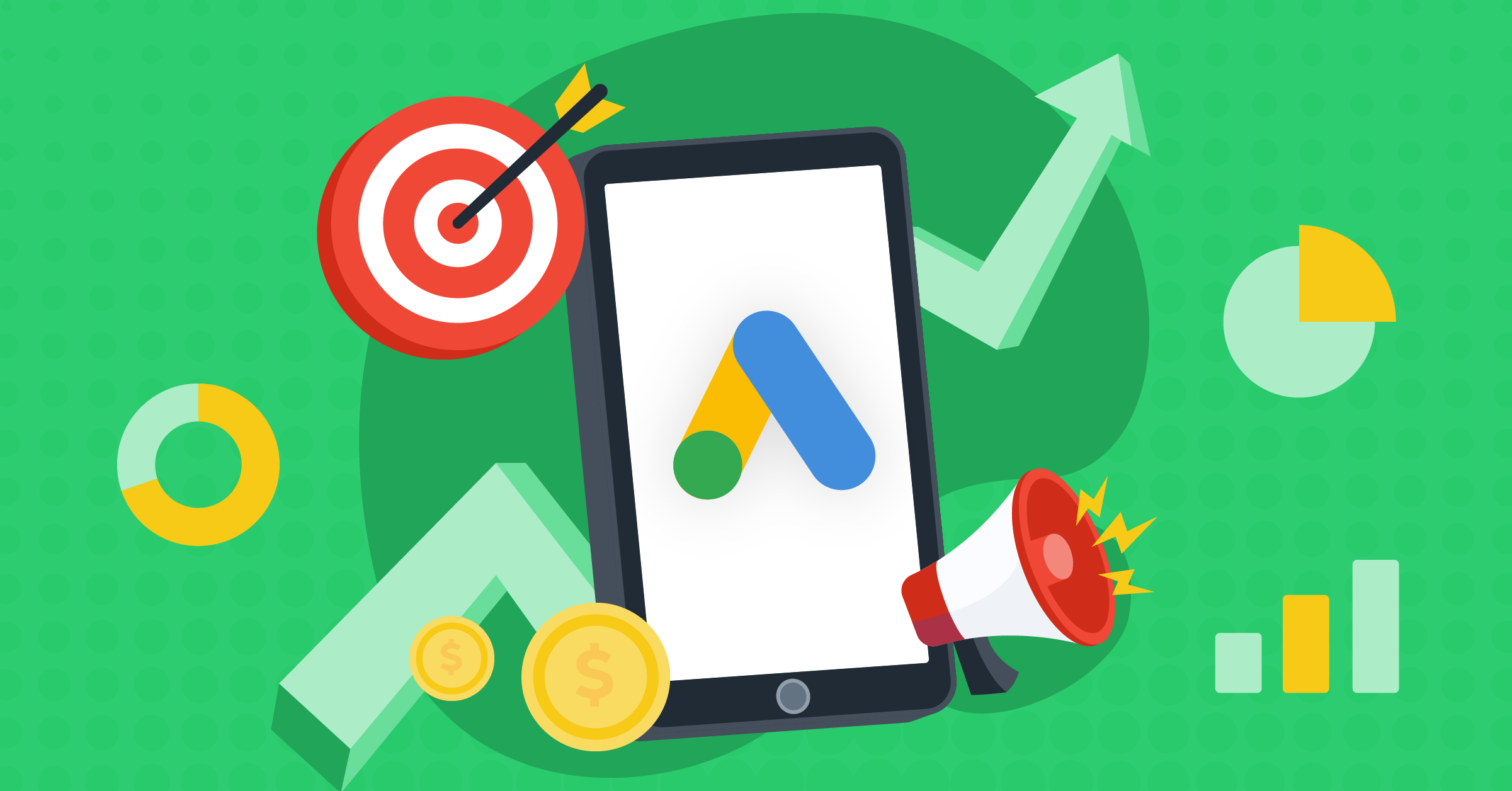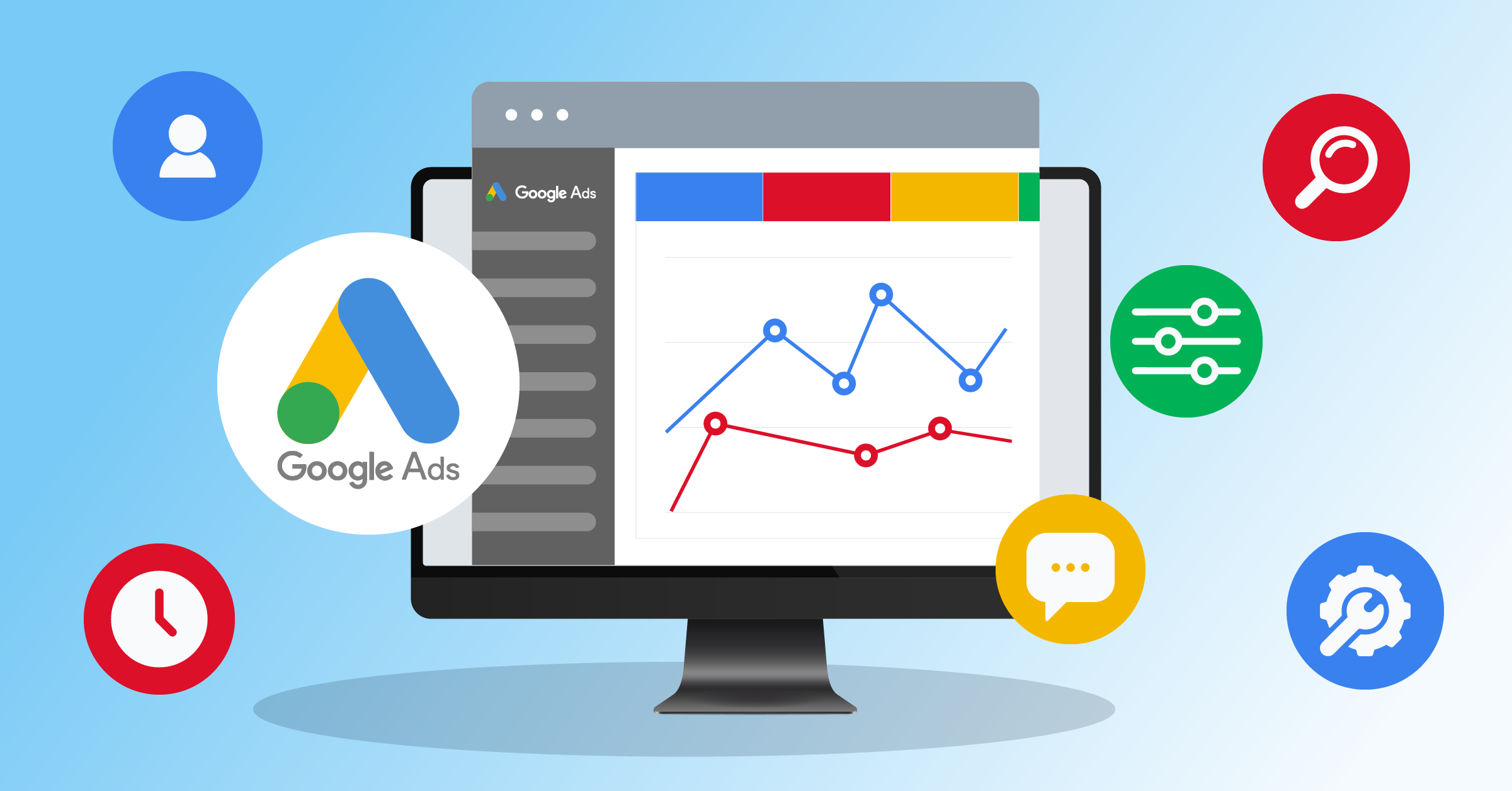
Google Ads is Google’s pay-per-click (PPC) online advertising platform. Via the Display Network and Google’s AdSense program, advertisers place bids on specific keywords.
These bids then determine the placement of ads across various search results and websites. Besides, Google dominates the global PPC advertising market.
- How does Google Ads work?
- Understanding Google Ad costs
- SE Ranking keyword research software
- Google Ads daily budget
- What is the minimum Google Ads budget?
- Factors influencing Google Ads spend
- Google Ads metrics to consider
- Predicting Google Ads costs
- How much do Google Ads cost in 2025
- How to lower your Google Ads cost
- How to maximize your Google Ads campaign
- Google Ads updates to consider in 2025
- Key takeaways
In this article, you will learn how Google Ads operates, understand Google Ads’ cost and the factors that influence it, as well as associated metrics and updates to be aware of.
How does Google Ads work?
Google Ads operates a keyword bidding system. Each business sets specific keywords related to its offering and target market.
Google then multiplies your bid by your Quality Score (ad + landing‑page relevance & UX) to set Ad Rank.
This way, you pay just enough to beat the advertiser below you. There are also automated bidding strategies (e.g., Maximize Conversions) that now use Google AI to adjust bids in real‑time.
These factors combined determine your ad rank, which is where your advertisement will appear on the search engine results page (SERP).
Understanding Google Ad costs
There is no fixed answer to the question of how much Google Ads will cost your business. But we can still discuss averages.
Several factors influence the overall Google advertising costs, specifically the cost-per-click (CPC).
Let’s take a closer look at some of these deciding factors:
1. Industry
The pricing associated with Google Ads will vary across industries. Each industry has its own average cost-per-click. Therefore, if your business belongs to a sector with a high CPC, you should expect your budget to be greater.
The average CPC on Google Ads in 2025 is around $5.26, with legal and dental services topping the charts as the most expensive categories. This is driven by intense competition and high customer lifetime value.
The average CPC for attorneys stays around $8.60, while dental services average about $7.85 per click. This highlights ongoing competition and strong customer value in these industries.
Before forecasting, pull industry benchmarks and layer your own historical data. AI clustering in Performance Planner (rolled out 2024) is surprisingly accurate.
Learn more about how to use Google Ads effectively in specific industries, such as:
2. Location
The majority of businesses have expanded their services globally, meaning they run multiple international advertising campaigns. Therefore, different customers across the globe will have different search intentions.
The United States still has some of the highest average CPCs in the world. It’s good to keep geographic CPC differences in mind when planning campaigns so you can stretch your budgets further.
3. Network
There are two additional networks in operation, aside from Google Ads, within this process. These are Google Search and Google Display Network.
The Google Search platform displays your advertisements to users searching for terms related to your keywords through the search engine. The Google Display Network presents them to a larger audience by utilizing other people’s websites, videos, and apps.
4. Placement
Where your ad shows up affects both cost and intent. CPCs generally follow this hierarchy: Search > Shopping > Display.
Search captures the highest intent but costs the most. Display is cheapest but often has weaker conversion intent. Use each network strategically based on your funnel stage.
5. Competition & seasonality
Expect CPC spikes in Q4 and around localized “micro‑peaks”, which are increasingly influenced by AI‑driven budget and bid recommendations across advertisers.
Understanding your industry’s peak times (beyond just Black Friday/Cyber Monday) helps you budget and plan more effectively.
6. Device mix
Mobile accounts for nearly 72% of paid‑search clicks, and most campaigns now rely on automated bid adjustments for devices.
Still, it’s worth analyzing performance by device in your own data. Some industries (like B2B) may still convert better on desktop, despite higher mobile volumes.
7. Quality Score
Google’s Quality Score remains one of the most powerful levers you control.
Every point above five can cut CPCs by up to 30%, while dropping below five can quickly inflate costs.
Optimizing ad relevance, landing page experience, and CTR is key to keeping costs down and efficiency up.
SE Ranking keyword research software
SE Ranking is the all-in-one SEO software designed for businesses looking to establish a seamless SEO and PPC workflow. These tasks include keyword and competitor research, as well as website and advertising monitoring.
By introducing the SE Ranking software into your keyword research process, you can discover effective keywords for your advertising campaigns, as well as search volume and dynamics.
As well as this, you can access Google Ads’ cost information, including CPC data per region.
However, you should keep in mind that CPC rankings are indicative, not definitive, since the real-time bidding data doesn’t come directly from the ad platforms.
How to use SE Ranking
Step 1: Enter the targeted keyword previously selected in the Google Keyword Planner..
Step 2: Select the Google search engine and your search location.
Step 3: Click “ANALYZE” to proceed. The results displayed in the “Overview” tab show the core keyword parameters – Difficulty, Search Volume, CPC – as shown below.
Step 4: Check the CPC parameter that enables cost predictions. This is the actual price for each click in a Google Ads marketing campaign.
Step 5: Click the “Ads History” tab to view detailed competitor reports for current and previous months. This shows traffic, total traffic cost, and keyword data.
Step 6: If the selected keyword does not meet your budget expectations, move to the ‘Keyword Suggestions’ tab and analyze other ideas. Sort by Search Volume or CPC.
Google Ads daily budget
Set an average daily budget, but remember Google can overspend by up to 2× on high‑traffic days (it auto‑levels across the month). Use:
- Keyword Planner for volume & CPC forecasts.
- Performance Planner (now with generative scenario explorer) to stress‑test budgets against seasonality.
- Budget Pacing alerts (rolled out 2024) to surface underspend or overspend mid-flight.
There’s still no minimum budget, but below ~$30/day, it takes longer to collect statistically solid data.
What is the minimum Google Ads budget?
You may be wondering about the minimum Google Ads cost budget a business can have. Naturally, you want to avoid spending too much on an ad system that you are not yet fully accustomed to.
The good news is there is no minimum.
However, the amount you spend directly correlates with the speed at which you acquire data. This data is vital in determining conversion origin, effective keywords, and which ads are influencing users.
If you set your daily spend limit too low, it will take longer to gain the data you need to make informed advertising budgeting decisions.
Similarly, if the spending is too high, you could run a loss by wasting money on futile actions as you are trying to navigate the system.
Here’s how to control & reduce Google Ads spend:
- Target long‑tail & brand‑plus queries to dodge auction heat.
- Build negative‑keyword lists from the new AI Max search‑term insights.
- Keep Quality Score ≥ 7 with lightning‑fast mobile pages and tightly themed ad groups.
- Run Experiments (50/50 splits) before scaling Cost/Conv‑reducing tactics.
Factors influencing Google Ads spend
Knowing what affects your Google Ads costs is just the first step. The real value comes from knowing what to do about it.
Here are some strategies to help you optimize campaigns and control CPCs effectively.
- Benchmark CPCs against your own data to spot overspending and hidden opportunities.
- Use location bid adjustments to shift budget toward lower-cost, high-ROI regions.
- Match each network to its strength: Search for intent, Display for awareness, Shopping for products.
- Plan budgets early for seasonal peaks to avoid paying inflated CPCs last minute.
- Check device-level performance and adjust bids to favor where conversions actually happen.
- Aim for a Quality Score of 7+ to cut CPC by up to 30% while maintaining position.
- Use Performance Planner’s AI forecasts to set smarter, more realistic budgets.
- Segment campaigns by funnel stage to control CPC while moving users toward conversion.
- Monitor micro-trends and adjust bids proactively rather than reactively.
- Keep testing ad relevance and landing pages to boost CTR and lower CPC over time.
Google Ads metrics to consider
Google Ads metrics are some of the most important tools we have in gaining insight into our advertising campaign performance. They give us clear data that enables us to evaluate our strategies and make additions and deductions where necessary.
Below are four metrics you should consider to make the most of your paid search performance.
Impressions
An impression refers to the number of times an ad has been shown on a search result page or an alternative site on the Google Network.
This Google Ads metric is useful as it informs a business about the degree of exposure each campaign is getting on an advertising channel and tracks brand awareness.
By segmenting your impressions based on specific campaign groups, you can determine which variation of your marketing message performs best.
Click-through rate
Click-through rate refers to the ratio of people who have clicked on your ad to those who have only viewed it.
This metric allows you to measure advertising campaign success in terms of performance and customer engagement. Additionally, it can be useful in determining which keywords are more effective in triggering customers.
Return on advertising spend
This is the ratio of an ad’s revenue generated to cost. It informs businesses how much money they are getting back from their advertising efforts and provides an overview of their performance.
Essentially, ROAS is the ultimate financial measure of any campaign. To calculate this, you need to keep track of your sales and exactly what channel they come from.
Conversion rate
Conversion rate is the ratio of actual conversions to the number of ad visitors. This metric enables businesses to gauge how well an ad is facilitating conversion.
What an advertiser deems to be a conversion will depend on their objectives. It may be a purchase, subscription, download, or form submission.
As you are paying for each click, it is important to monitor the conversion rate to ensure your Google Ads budget is not being wasted on ineffective advertising.
Predicting Google Ads costs
When attempting to predict your Google advertising costs, there are two key methods to consider.
The first method is Google Keyword Planner. This tool allows advertisers to research keywords related to their business and view estimated search volume and costs.
How to use Keyword Planner in 2025:
- In your Google Ads account, click on Tools & Settings in the top menu.
- Under Planning, select Keyword Planner.
- Click Discover new keywords.
- Enter a keyword, URL, or industry to generate keyword ideas. Use filters for location, language, and network.
- Review results showing average monthly searches, competition level, and bid ranges.
- Check the boxes next to relevant keywords and add them to your plan.
- Click Forecast to see estimated clicks, impressions, costs, and conversions based on your bid settings and budget.
Forecasts now incorporate machine learning that factors in seasonal trends and AI-driven market shifts, making predictions slightly more dynamic and context-aware than before.
Google Ads Cost Calculator
This is still a helpful external tool (not provided by Google itself) to get quick estimates of campaign ROI based on your own assumptions.
You input your planned ad spend, expected CTR, conversion rate, and revenue per conversion, and it calculates your cost per lead or sale and projected ROI.
This method is useful for modeling scenarios and testing assumptions, but remember that it’s a rough estimate and won’t replace real campaign data.
How much do Google Ads cost in 2025
In 2025, Google Ads costs can differ a lot based on your industry, how competitive the space is, and how well your campaigns are set up.
The average CPC sits around $5.26, but in highly competitive fields like legal and dental, it often climbs to $8 or more.
A great spending plan can go a long way toward keeping costs in check and getting more out of your budget.
How to lower your Google Ads cost
If you want to cut waste and make your spend more efficient, focus on these proven tactics:
- Target long-tail keywords
Bid on longer, more specific keywords (4+ words) with lower competition and higher intent. This reduces CPC while attracting better-qualified leads.
- Use negative keywords with caution
Block irrelevant search terms that drain your budget. Regularly review your search terms report to find and exclude poor matches.
- Boost your Quality Score
Higher Quality Scores mean lower CPC and better ad placement. Improve it by:
- Matching ad copy and landing page content to your target keywords.
- Ensuring your landing page is mobile-friendly and loads fast.
- Using specific URLs that take users directly to the right product or offer.
- Simplifying the user journey to reduce bounce and increase conversions.
Audit your campaigns monthly to expand negative keyword lists, refresh ad copy, and test new long-tail terms. These small tweaks compound into big savings over time.
How to maximize your Google Ads campaign
Having taken advertising costs into consideration, businesses should also look toward some additional tools that can help maximize campaign performance and efficacy.
Google Lead Form
Google lead forms are extensions that are shown under your paid search ad on mobile devices. They allow users to directly input their contact information through your ad on the search engine result page, rather than having to visit your designated landing page.
If a user is signed-in to their Google account, this form will be pre-populated with the relevant contact information. Lead forms enable potential customers to convert with one simple click, directly from their mobile.
As a Google Premier Partner, LeadsBridge can facilitate this seamless integration, allowing your leads to convert quicker. With our direct line to Google, we provide advanced training and support to help ensure the success of your campaign.
Google Customer Match
Additionally, LeadsBridge can help you streamline your advertising processes and automate online-to-offline data with Google Customer Match. This automation enables the matching of customer information with users in the database to determine who can see your ads.
The Google Customer Match tool allows you to optimize your data to re-target customers across a host of platforms, including Google Search Engine and Display Network, Gmail, and YouTube. This allows for a much wider reach.
Google Ads updates to consider in 2025
Find out what’s new in Google AdSense:
- Ad Intents
New interactive ads that respond to what users are looking for, like clickable links in your content that open a search dialog right on your site.
You can also choose whether display ads always show alongside them or only as a fallback, giving you more control over how they appear.
- Related Search for Auto Ads
This adds a small block of related search terms to your pages, helping users discover more relevant results while also boosting ad engagement without adding more ad clutter.
- Restricted Access Features (RAFs)
For AdSense for Search, Google now limits advanced features (like custom styling, multiple search units, and detailed reporting) to publishers with a good compliance record. Those with repeated violations lose access after five strikes. This is meant to protect ad quality and fairness.
- Site-level Auto Optimize controls
Previously, Google’s Auto Optimize (which runs experiments to improve performance) was all-or-nothing. Now you can enable or disable it per site. It’s handy if you manage different kinds of websites with different strategies.
- Rewarded Ads (beta)
A new format where users opt into a full-page ad in exchange for access to premium content or perks. This is ideal for membership or subscription-based sites that want to monetize without alienating users.
- Anchor & Side-rail placement options
You can now pick where fixed-position ads appear: anchors can sit at the top or bottom of the page, and side-rails can appear on the left or right. That lets you fit ads into your site’s design more naturally.
- Privacy & compliance updates
To meet new US privacy laws and maintain GDPR compliance, Google simplified opt-out options, deprecated some old toggles, and now requires a consent-first setup. You’ll need to use an IAB-compliant consent management platform.
- Removal of niche blocking categories
The specific “Video Games (Casual & Online)” sensitive category was removed. You’ll now use broader brand-safety categories to block ads you don’t want.
- AdSense for Search mobile app support dropped
If you were monetizing search in mobile apps, that’s no longer supported as of April 2025. Only web-based search is supported now.
Key takeaways
Google has a long-standing reputation as being an advertising goliath. With high returns on investment and a wealth of information to help you succeed, businesses should take advantage of the growth potential this platform offers.
By allowing you to determine your budget, Google Ads’ cost can be reigned in or expanded depending on your circumstances. This gives businesses an added layer of financial security, as they have total control of how their finances are put to use.
As a Google Premier Partner, LeadsBridge can extend this advertising and financial success. By facilitating a seamless Google Lead Forms and Google Customer Match integration with your CRM, you can optimize your campaigns to ensure you reach the right audience every time and achieve conversions.
Discover our integrations for Google Lead Form Ads: Everything you need to seamlessly connect their lead generation campaigns to their favorite CRM and marketing tools.






















